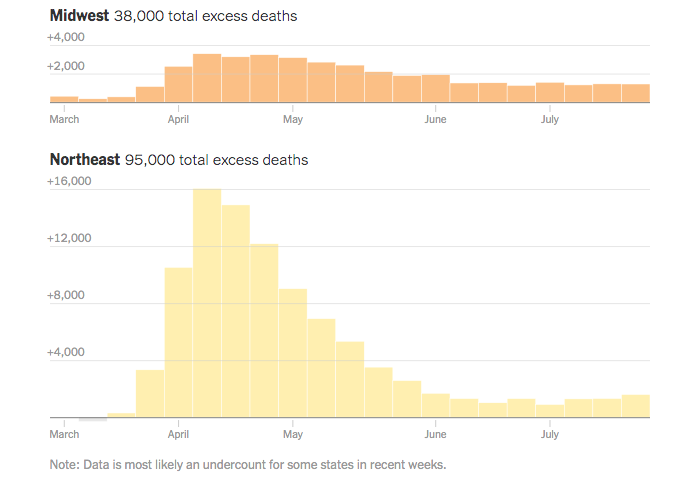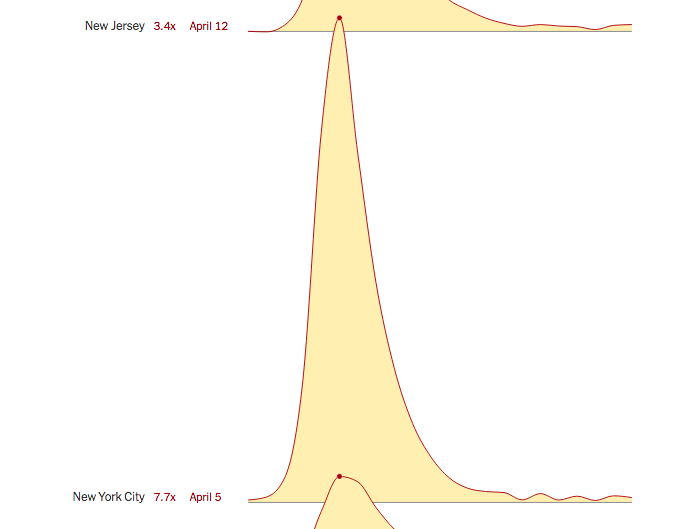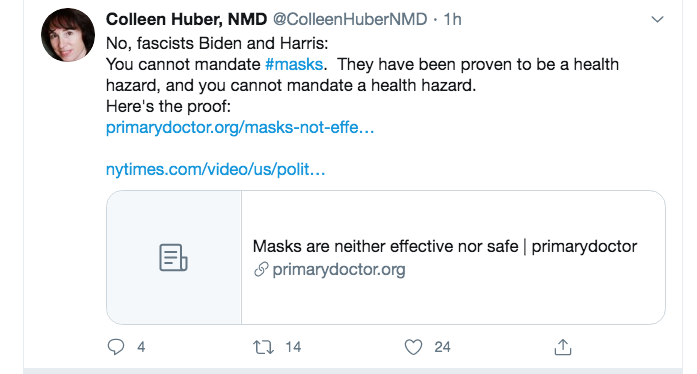It appears that the study by Colleen Huber, NMD, a Naturopathic Medical Doctor, cited in the OP is incomplete, and was subsequently withdrawn on 13 August, 2020.
The NYT article, 13 August 2020, appears to sharply contradict the doctor's study and conclusions.
The True Coronavirus Toll in the U.S. Has Already Surpassed 200,000


Across the United States, at least 200,000 more people have died than usual since March, according to a New York Times analysis of estimates from the Centers for Disease Control and Prevention. This is about 60,000 higher than the number of deaths that have been directly linked to the coronavirus.
As the pandemic has moved south and west from its epicenter in New York City, so have the unusual patterns in deaths from all causes. That suggests that the official death counts may be substantially underestimating the overall effects of the virus, as people die from the virus as well as by other causes linked to the pandemic.
[…]
Weekly deaths above normal in each state
The charts below show how much higher than usual weekly deaths have been in each state. States with the most recent peaks — the week when they saw the most excess deaths during the pandemic — appear first. For each state, weeks in which data may be incomplete are excluded.
The US city with the highest peak of COVID-19 mortality is New York City. As seen below, the number of deaths was 7.7x above that of the average weekly death rate on April 5. On the same day, excluding the city of NY, the death toll in the state of New York was 2.4 times higher than average.


It is clear from the tweets and the number of papers published on PrimaryDoctor.Org that the author of the now-withdrawn paper, Colleen Huber, NMD, is a fierce opponent to social distancing and the wearing of masks. In a paper entitled, Proof: Lockdowns Did Not Reduce Deaths, published in June 16, 2020, Doctor Huber argued
[emphasis in bold, mine]
States without lockdown, herein “free states,” have had a lower percentage than states with lockdown, herein “locked states,” of total deaths from all causes in these weeks in 2020, compared to the same weeks for each of the states in the years 2017 to 2019.
[…]
Lockdowns were imposed by many jurisdictions for the stated purpose of limiting movement, activities and commerce of individuals and businesses, for the goal of limiting COVID-19 incidence and mortality. It was widely hoped this would work. However, outside of the US, it was found that mortality actually increased steeply closely following lockdowns.(3) Also, it was found that in Europe, “no lives were saved” by lockdown.(4) In an early analysis in the US also, it was not found that lives were saved by shutdown.(5) Those last two analyses were relatively early, 4/24 and 4/26/20 respectively, before it was clear that COVID-19 incidence, hospitalizations and deaths had peaked.
The same doctor also tweeted this missive earlier today.
No, fascists Biden and Harris:
You cannot mandate #masks. They have been proven to be a health hazard, and you cannot mandate a health hazard.
Here's the proof: Masks are neither effective nor safe: A summary of the science

From that tweet alone, it would suggest that the doctor's paper and the analysis of the data is one of confirmation bias. However, to her credit, the paper is no longer viewable, as researchers pointed out that she had missed certain data on the CDC website. “My paper may have to be revised, and my revised paper will appear here when ready.”
Further references:
Are deaths of patients with, but not because of, COVID-19 recorded as COVID-19 deaths in the USA?
As of May 2020, are there twice as many deaths from Covid-19 in New York City as there are on a usual day from all other causes combined?







